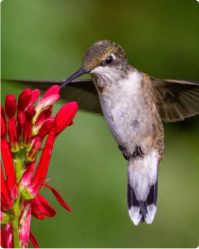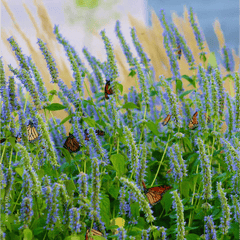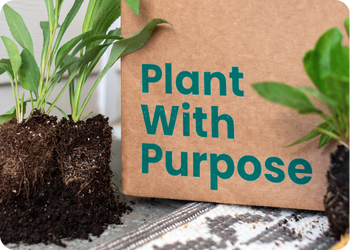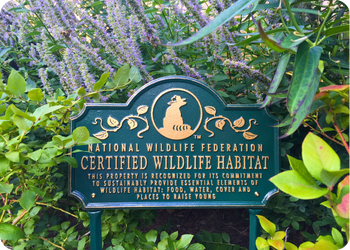What is No Mow May? Steps to Kill Your Lawn and Create Wildlife Habitat

What is No Mow May?
"No Mow May" is a campaign aimed at promoting the practice of delaying or reducing mowing lawns during the month of May.
No Mow May originated in the UK in 2019, but has since spread to other countries, including the US. Many communities, organizations and individuals in the US are now promoting No Mow May as a way to support pollinators and other wildlife, including local governments, conservation groups, and gardening enthusiasts.
The purpose of "No Mow May" is to encourage people to let their lawns grow wild and allow natural plant growth to support local wildlife, such as bees, butterflies, and other insects. By not mowing the lawn as often or as early, wildflowers and other plants have the opportunity to grow, which provides important habitats and food sources for local wildlife. For example, areas of long grass can provide shelter for ground-nesting bees and other insects, while leaf litter and woody debris can provide overwintering habitat for butterflies and other insects. We also recommend you leave the leaves in the fall!
In addition to supporting wildlife, "No Mow May" can also help to reduce greenhouse gas emissions and improve air quality. By not using lawnmowers and other gas-powered lawn tools, individuals can reduce their carbon footprint and help to combat climate change.
Entomologist Dr. Doug Tallamy sees little logic in letting lawns grow longer for a few weeks. If people simply let their grass grow for a month and then revert to a clipped green monoculture, they are teasing pollinators with short-term snacks followed by starvation, he said.
And for some warmer climates, the entire month of May might be too long. No Mow May is a good idea at its heart - every time we fire up a lawn mower, wildlife is impacted. Encouraging "Slow Mow May," or cutting back trims in the summer may be ideal for you. These kind of movements remind us to think about how our actions impact the planet.
The best way to stop mowing (and help wildlife) is to replace your lawn altogether with native plants.
Why is mowing your lawn bad?
Lawnmowers, particularly gas-powered lawnmowers, can have negative environmental impacts in several ways:
- Greenhouse Gas Emissions: Gas-powered lawnmowers emit carbon dioxide and other greenhouse gasses, which contribute to climate change.
- Air Pollution: In addition to carbon dioxide, gas-powered lawnmowers also emit other harmful pollutants, such as nitrogen oxides and volatile organic compounds (VOCs), which can contribute to smog and poor air quality. This can be especially problematic in urban areas where lawnmowers are often used in close proximity to homes and buildings.
- Noise Pollution: Lawnmowers can also be very loud, which can be a nuisance to neighbors and can even cause hearing damage to the person operating the machine.
- Habitat Destruction: Finally, mowing lawns can lead to habitat destruction for local wildlife, such as bees, butterflies, and other insects. By mowing frequently and keeping lawns short, we remove important habitats and food sources for these species.
While lawnmowers are a convenient tool for keeping lawns tidy, there are alternative methods of lawn care that are more environmentally friendly, such as using electric or manual mowers, simply allowing the lawn to grow wild in certain areas, or, better yet, planting native grasses and other plants.
How to reduce your lawn size
Reducing the amount of lawn and incorporating native plants can be an effective way to support local wildlife. Not only will you be helping to support local wildlife, but you'll also be creating a more sustainable and resilient ecosystem.
Here are some steps you can take to create a wildlife-friendly garden with native plants:
- Assess Your Yard: Start by evaluating your yard to determine which areas are suitable for planting certain native plants. Consider factors such as sun exposure, soil type, and moisture levels. Shop native plants by state or zip code.
- Choose Native Plants: Select native plants that are well-suited to your yard's conditions and that provide food and habitat for local wildlife. Consider planting a mix of wildflowers, shrubs, and trees to provide different layers of vegetation and support a diverse range of species.
- Plant in Groups: Planting native plants in groups can help to create larger patches of habitat for wildlife and make it easier for them to find food and shelter.
- Provide Shelter: In addition to planting native plants, consider adding features such as birdhouses, brush piles, and rock piles to provide shelter and nesting sites for wildlife.
- Avoid Pesticides: Avoid using pesticides and herbicides in your garden, as these chemicals can harm wildlife and disrupt the ecosystem.
By reducing the amount of lawn and incorporating native plants, you can create a beautiful and wildlife-friendly garden that supports a diverse range of species.

Find Native Plants by Zip Code
We took the guesswork out of planting native. Check your zip to see what ships!

















